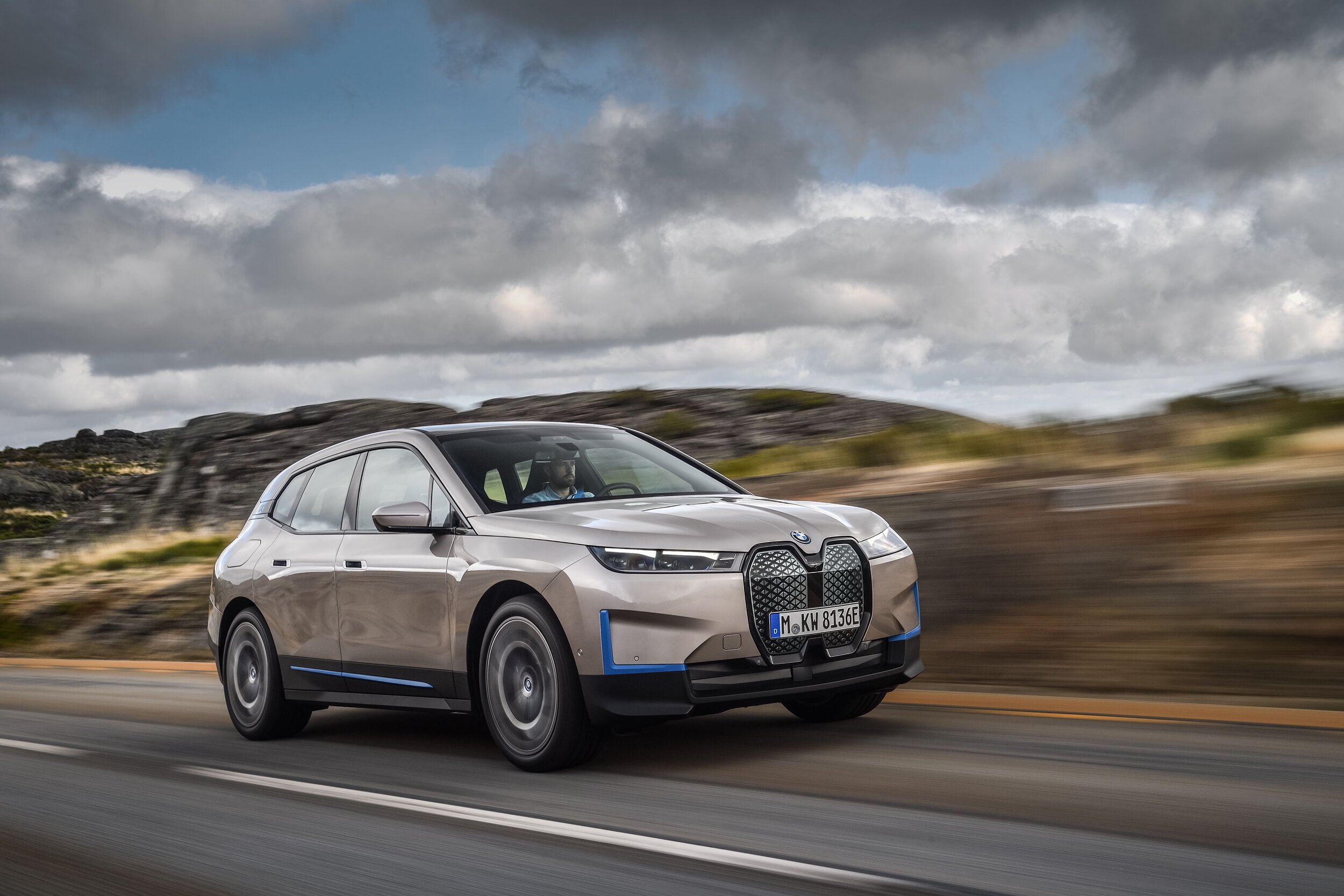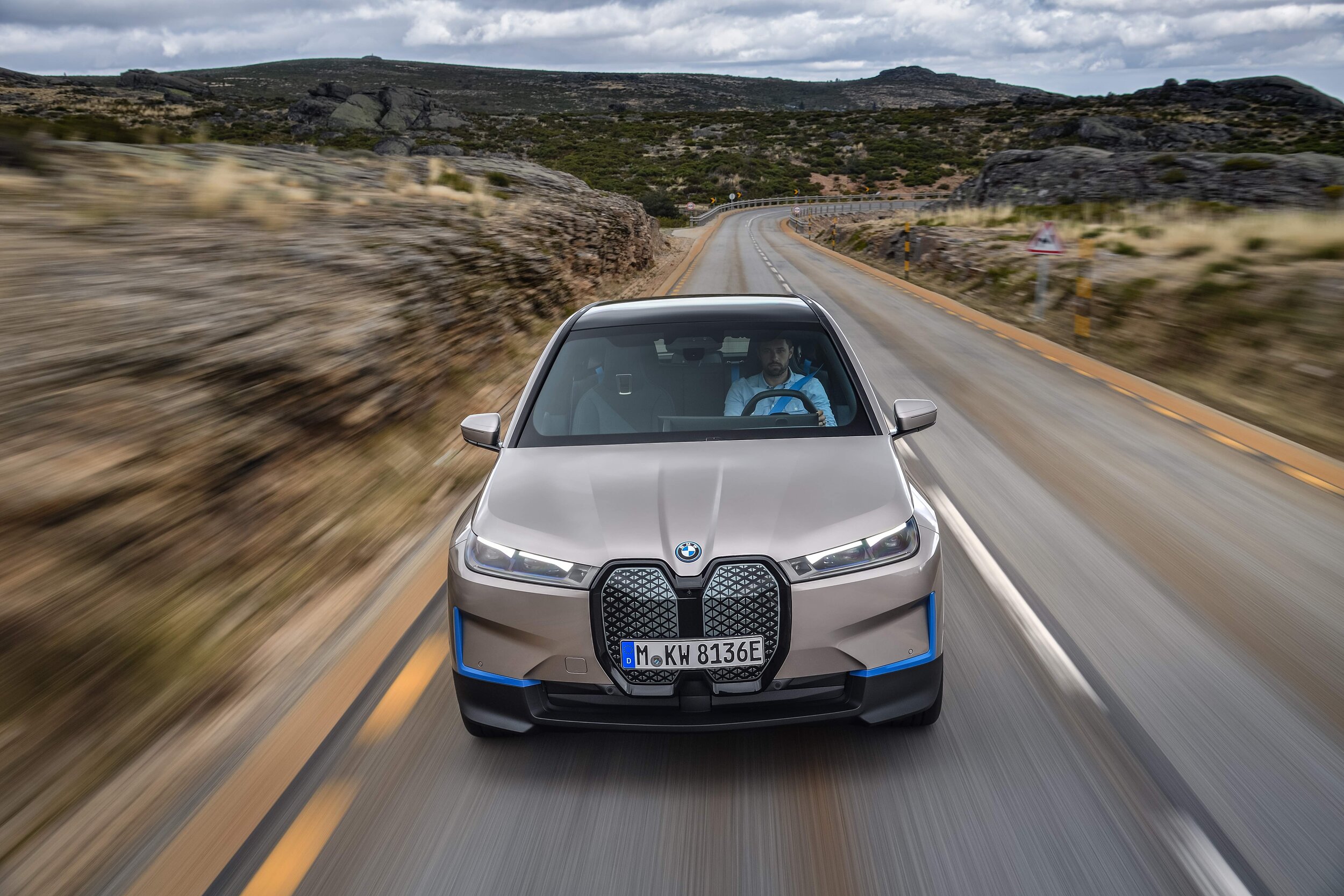Future is here for BMW with its flagship iX electric car
The BMW iX has gone from concept to preproduction and will be launched mid-2021. Photos: BMW
BMW has revealed the iX, the brand’s new technology flagship, that will go into production from the second half of 2021.
The five-seater SUV will be the size of the BMW X5 but the luxury and space of the X7, and promises to have Level 3 autonomous driving.
A year before its market launch, BMW is showcasing the futuristic electric vehicle that is still in the series development phase.
The BMW iX is the first model based on a new, modular, scalable future toolkit developed by the BMW Group; its focus is a fresh interpretation of design, sustainability, driving pleasure, versatility and luxury.
The fully electric BMW iX will have a range of 600km and Level 3 autonomous driving.
Conceived from the outset for purely electric mobility, the iX sees BMW redefining the successful Sports Activity Vehicle (SAV) concept. With its completely newly developed, precise and minimalist design, the BMW iX is the first representative of a trailblazing generation of cars poised to redefine the driving experience, the feeling of interior space and the relationship between a vehicle and those on board.
The design and technology of the BMW iX form an overall package that lays the foundations for a new kind of driving experience. In so doing, it comprehensively embodies the character of the BMW i brand, that plays a central role at the BMW Group as a “workshop for the future” and driver of innovation across the company.
“The BMW Group is constantly striving to reinvent itself. That is a central element of our corporate strategy,” says Oliver Zipse, Chairman of the Board of Management of BMW AG. “The BMW iX expresses this approach in an extremely concentrated form.”
A clear development aim was for the BMW iX to post an exceptionally low combined electric power consumption figure for its segment of less than 21 kWh per 100 kilometres in the WLTP test cycle. A gross energy content of more than 100 kWh should enable the latest-generation high-voltage battery to record a range of over 600 kilometres in the WLTP cycle.
The interior will be similar to the BMW X7 SUV.
The BMW iX, the BMW Group’s new technology flagship, will go into production at BMW Plant Dingolfing from the second half of 2021. It brings together the company’s latest developments in the strategically important fields of Design, Automated Driving, Connectivity, Electrification and Services. Added to which, the vehicle concept and design of the BMW iX are rooted in an all-embracing approach to sustainability.
This is reflected in areas of the car such as its optimised aerodynamics, intelligent lightweight design and extensive use of natural and recycled materials, which help to create a cutting-edge sense of luxury and comprehensive feeling of wellbeing on board.
Head of design, Adrian van Hooydonk (seated) worked on the creation of the iX.
The iX, developed under the internal codename i20, is a departure from BMW’s previously announced plan to base future electric models on the same platforms as its existing petrol, diesel and plug-in hybrid cars. It uses a new aluminium space frame that supports an inner carbon fibre reinforced plastic (CFRP) structure, and a body made out of a combination of aluminium, composite plastic and CFRP.
The iX is BMW’s second dedicated fully-electric production model after the seven-year-old i3. BMW says the iX nameplate was chosen to signify the new model’s position at the top of the electric i line-up and its role in showcasing technology: it uses the new fifth-generation version of BMW’s electric drive system, and also offers high levels of autonomous and connected technology.
The exterior design highlights of the BMW iX also include the slimmest headlight units ever to feature on a series-produced model from BMW, the flush-fitted door openers (operated at the press of a button), the frameless side windows, the tailgate – which has no separation joints and extends across the whole of the rear – and the likewise extremely slim rear lights.
The BMW iX is set to charge to 80 per cent in 40 minutes.
The BMW kidney grille is not the only example of how the principle of shy tech has been integrated into the design of the BMW iX: an array of other cameras and sensors are positioned discreetly, the door openers are flush, the windscreen washer-fluid cap is concealed under the BMW logo on the bonnet and the rear-view camera has been integrated into the BMW logo on the tailgate. In each case, the technology stays in the background and only becomes apparent as and when the relevant functions are called into action.
“The BMW iX shows how we can give new technologies a very modern and emotionally engaging design. The car is technologically highly complex, but it feels very clear and uncomplicated,” says Adrian van Hooydonk, Senior Vice President BMW Group Design.
“The BMW iX offers a mobile living space in which people will feel at ease and the car’s intelligence is always available without becoming obtrusive.”
The BMW iX will compete with Audi’s e-tron, Tesla’s Model X and Mercedes-Benz’s EQC.
The BMW iX will feature the new BMW ‘coffin’ grille, but expect to see the number plate below.






